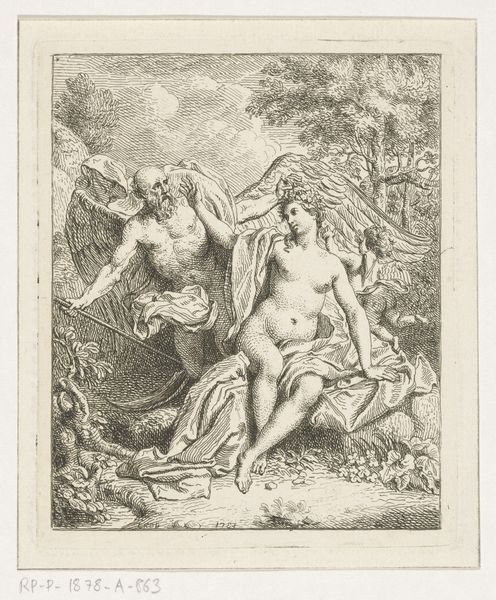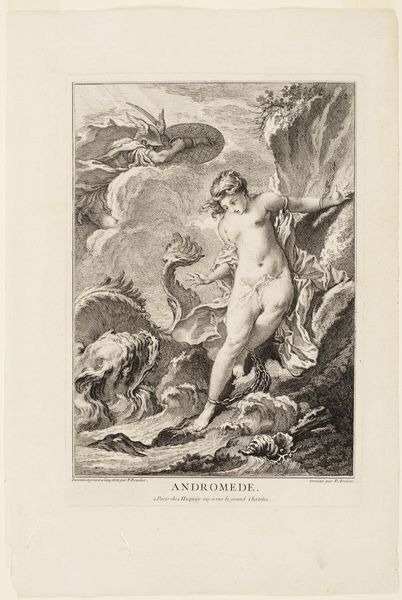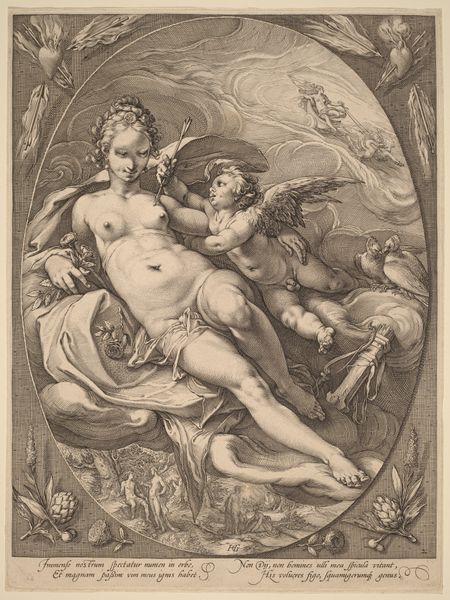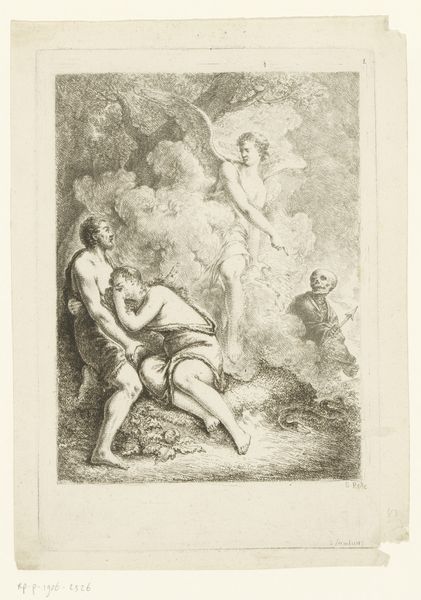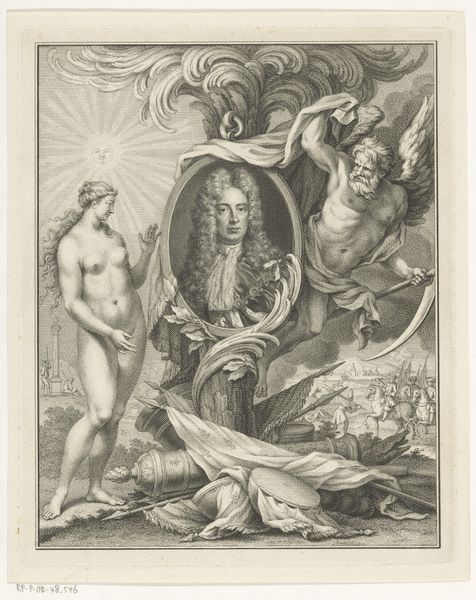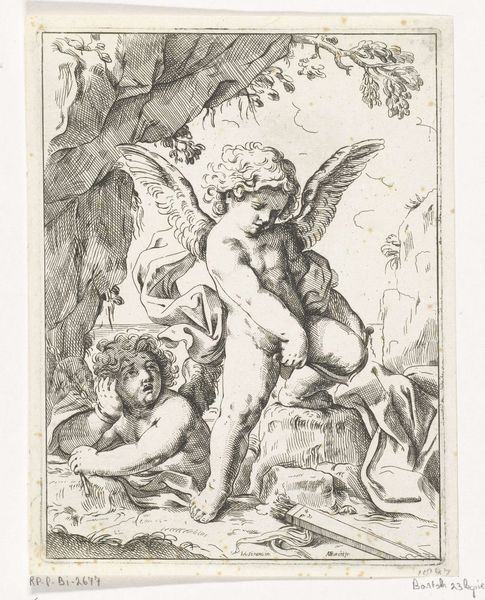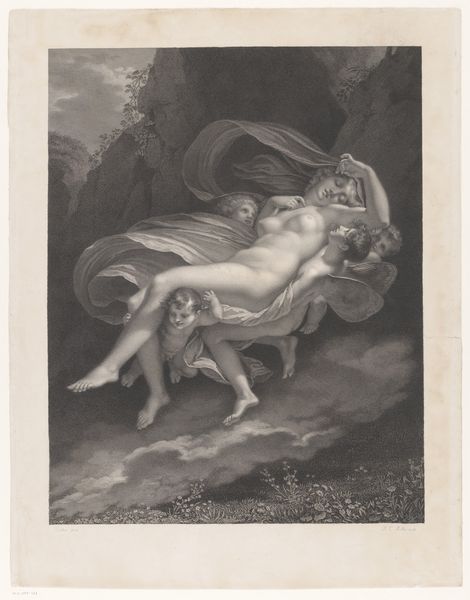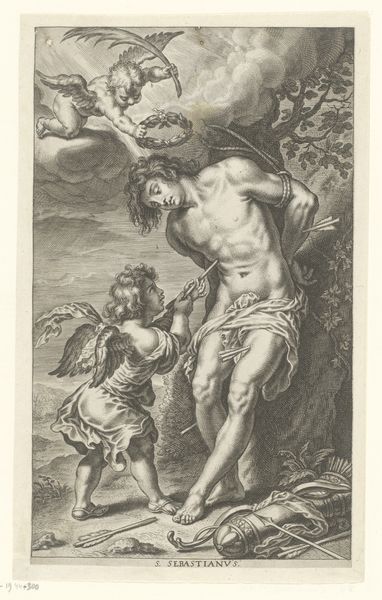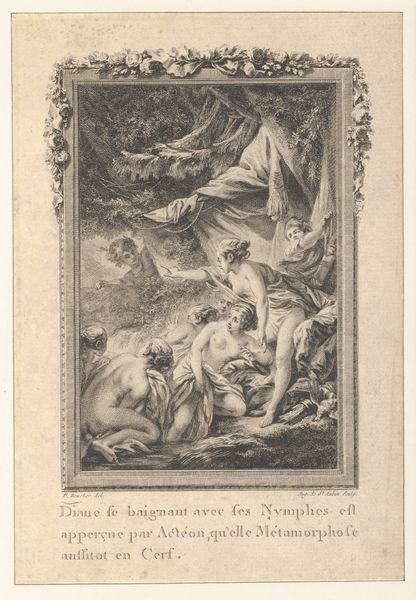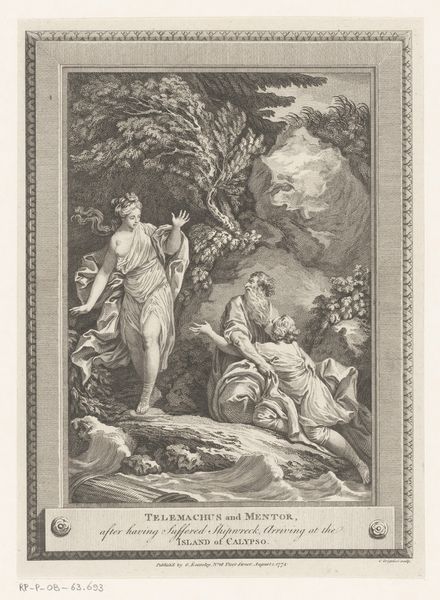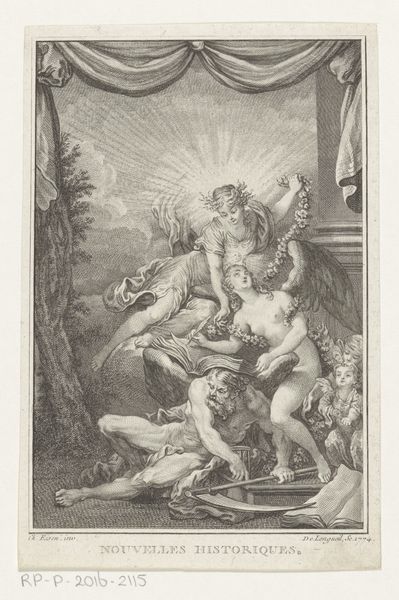
engraving
#
allegory
#
baroque
#
figuration
#
history-painting
#
nude
#
engraving
Dimensions: height 351 mm, width 242 mm
Copyright: Rijks Museum: Open Domain
Editor: This is François Boucher's engraving, "Perseus and Andromeda," from around 1734, currently at the Rijksmuseum. It's striking how the lightness of the engraving contrasts with the dramatic scene unfolding. What stands out to you? Curator: The lasting power of the Andromeda myth lies in its layered symbolism. It's a rescue narrative but also about vulnerability, power, and beauty on display. Bound and exposed, Andromeda becomes a symbol of innocence in peril. But also, consider the visual echoes – the monstrous sea creature mirroring the anxieties of the unknown. Editor: The "unknown," as in what, exactly? Curator: Think of the historical context – the Age of Exploration. The sea represented both opportunity and terrifying potential. Monsters weren't just fantastical; they embodied real fears of what lurked beyond the horizon. Boucher's sea monster pulls from a whole tradition of visual bestiaries meant to depict, understand, and perhaps even contain those fears. And Perseus, riding in, becomes not just a hero but a figure of conquering knowledge and civilization. Even the chains themselves carry cultural weight – a symbol of oppression, yes, but also of contracts, obligations, and societal structures that bind us. What about Perseus figure interests you in the scheme? Editor: It didn't occur to me, but yes – these themes intertwine unexpectedly. It sounds like a blend of fantasy and contemporary fears, reflecting an era's concerns. Curator: Exactly! Art often holds up a mirror, reflecting not just what is seen, but what is felt and feared, too. And through those repeated symbols, myths take on layers of meaning, accumulating cultural weight with each retelling. Editor: That makes this engraving much more relevant today too.
Comments
No comments
Be the first to comment and join the conversation on the ultimate creative platform.
